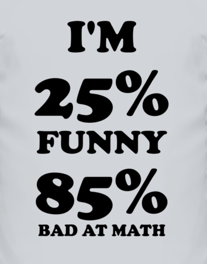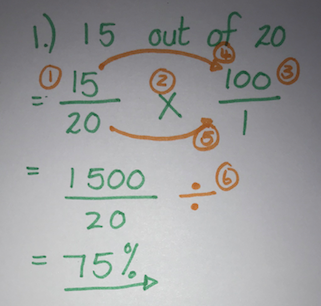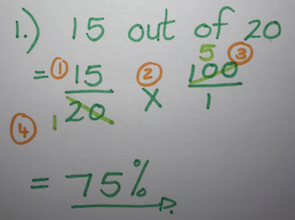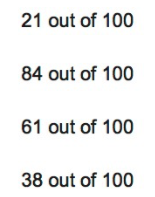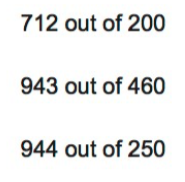Calculating percentage - Lesson 1
Percentage:
After the completion of multiplication and division of fractions, we can move on to calculating percentages.
Percentage is always out of 100. If a learner gets 80 out of 100 for a test, they have 80%.
We can calculate the percentage, write the percentage as a decimal number and even round off.
Calculating percentage:
Calculate the percentage:
The easiest way to show your 13 year old learners, is to do the following:
If they get 8 out of 10 for a test, out of means to divide. We put the 8 over 10 and multiply the fraction with 100.
100 is percentage.
There are easier ways to do this, but please remember you are working with 13 year old learners and they need to learn the basics first. Teach them the basics and they will be able understand the rest of the work easier.
Calculate the percentage of the following:
In this example we have to calculate the percentage of a test. The total of the test was 20 and the learner got 15.
We can say that the learner got 15 out of 20 for the test. To calculate percentage we can do the following:
- Step 1: Place the 15 over 20. (15 out of 20)
- Step 2: Change the "of" to a x (times sign). Of means to times (x).
- Step 3: Multiply with 100 over 1. ( 100 is percentage and we put it over 1 to make it a fraction)
- Step 4: Multiply at the top
- Step 5: Multiply at the bottom
- Step 6: Divide the numerator with the denominator (A fraction line means to divide)
- Step 7: Write your answer
We can also the the same example in the following way:
We follow the first 3 steps as above.
- Step 1: Place the 15 over 20. (15 out of 20)
- Step 2: Change the "of" to a x (times sign). Of means to times (x).
- Step 3: Multiply with 100 over 1. ( 100 is percentage and we put it over 1 to make it a fraction)
- Step 4: Simplify from top to bottom if possible. Get a number that can go into the bottom that can also go into the top. Multiply if there are no more numbers to simplify with.
- Step 5: You will see that the answer for both of these sums will be the same. We just used different methods.
Show learners both of these methods, some learners can do the sums using the longer method, and you will see that learners who knows their time tables will be better at doing the second method. Both of these methods are correct, let your learners use the one that they can do best.
When giving your learners activities, start with the easier ones.
Learners can just write the percentage for these sums, because they are already over 100 and 100 is percentage.
For these 3 sums, learners have to use the method that works for them. Do a few sums with your learners before giving the their own sums.


